
VEVOR Abrasive Chop Saw, 14in / 35cm Blade Cut Off Saw, 2300W 3600RPM Steel Cutting Machine, 0-45 Degrees Adjustable Angle Miter Saw for Cutting Metal Cutting Chop Saw for Steel Rebar Iron Aluminum
January 30, 2024
Neutrogena Ultra Sheer Dry-Touch Water Resistant and Non-Greasy Sunscreen Lotion with Broad Spectrum SPF 70, 3 Fl Oz (Pack of 1)
January 30, 2024Home improvement trends in 2024 are changing. They’re combining useful features, green practices, and personal style. People want their homes to be more practical, look better, and fit with a green, tech-savvy way of life.
In this article, we’ll check out the big trends in home improvement for 2024. You’ll see how they can change your living space and make your home worth more.
Multi-Functional Rooms: Adapting to the New Normal
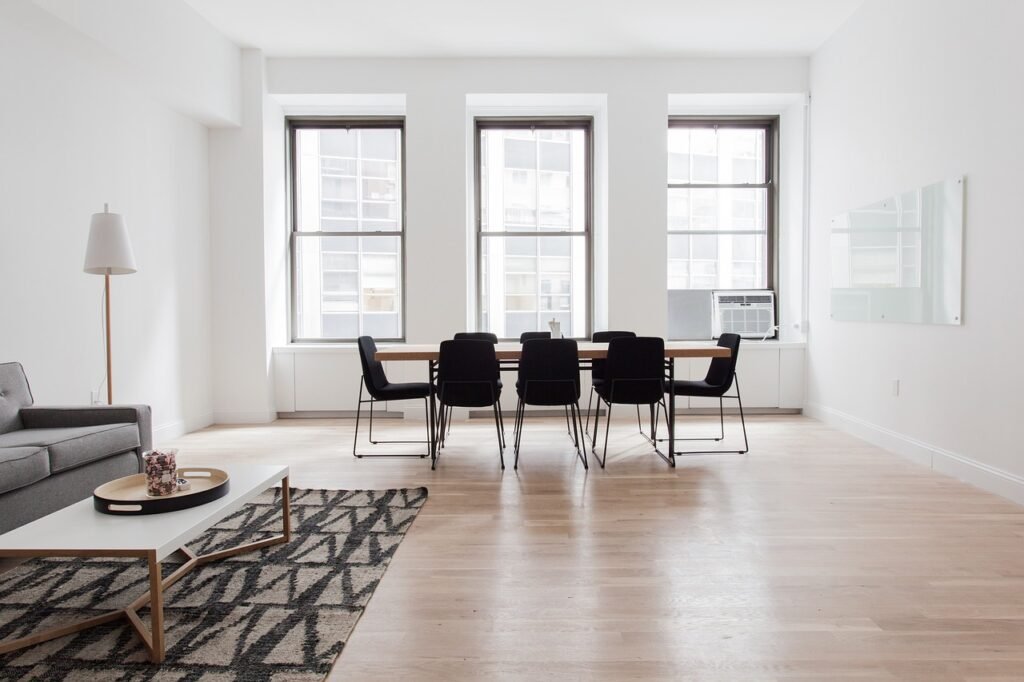
The multipurpose room has expanded and is bigger now. The normal course of our life at home has also changed significantly after the outbreak of the pandemic. Today, a room is more than a room – it can be converted, even on the fly, into something else, whether over a fixed period or for emergent purposes.
Think of a room that’s a peaceful office in the morning. By afternoon, it becomes an art studio. In the evening, it’s a cozy guest room. This flexibility is not just a trick – it meets the different needs homes have today.
This is especially true with more people working from home. Folks need a space to be productive. But the room can switch – one day an office, the next a yoga studio or playroom for kids.
You do need creative thinking and organization for these multi-use rooms. Not major renovations, but furniture that adjusts – like movable desks or sofa beds. Smart storage using shelves and cabinets also helps keep the room tidy as uses change.
Lighting is key too. Having lighting that can go from bright and energizing to soft and calming creates different vibes for different uses. Smart tech like WiFi also helps these rooms work well.
The bottom line – multi-functional, adaptable rooms are an important 2024 trend. With creativity, they can serve different purposes daily to meet modern home needs.
Making Your Outdoor Space Amazing – 2024 Home Improvement Trends
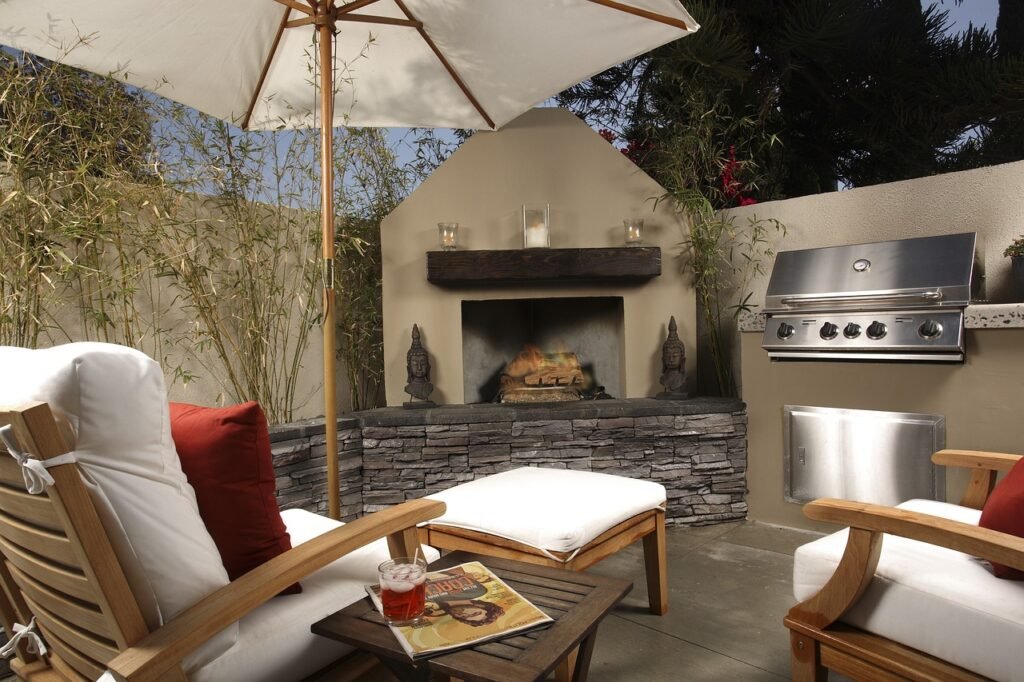
Turning backyards into usable living areas year-round is big nowadays. Gone are the days when backyards were just for occasional BBQs or kids playing. Today, they blend nicely with indoor spaces to give comfort and nature together.
The ‘outdoor living room’ idea is popular – patios and decks become full lounges with cozy seats, weather-proof rugs, and even outdoor entertainment. Imagine relaxing with a book on a plush outdoor couch or movie nights under the stars. That’s what homeowners want now.
Outdoor kitchens are also in. With built-in grills, fridges, and even pizza ovens, these kitchens are great for entertaining or dining al fresco. Cooking and eating outdoors adds joy to mealtimes.
It’s not just about fun – homeowners also want the wellness of being outdoors. Gardens for flowers, veggies, or greenery are key. They let you connect with nature and enjoy therapeutic gardening.
Sustainability also matters in design. Rainwater systems for garden irrigation and solar lights are functional yet eco-friendly. These cut utility costs and help the environment.
To enjoy the space year-round, fire pits and heaters make evenings cozy even in cooler weather. Lighting sets a magical mood – from string lights to spotlights, it also ensures safety.
This outdoor living trend shows homeowners want more space, nature, and health. Extending living areas outdoors stretches boundaries, giving new zones to relax, entertain, and grow.
Going Green at Home – 2024 Home Improvement Trends
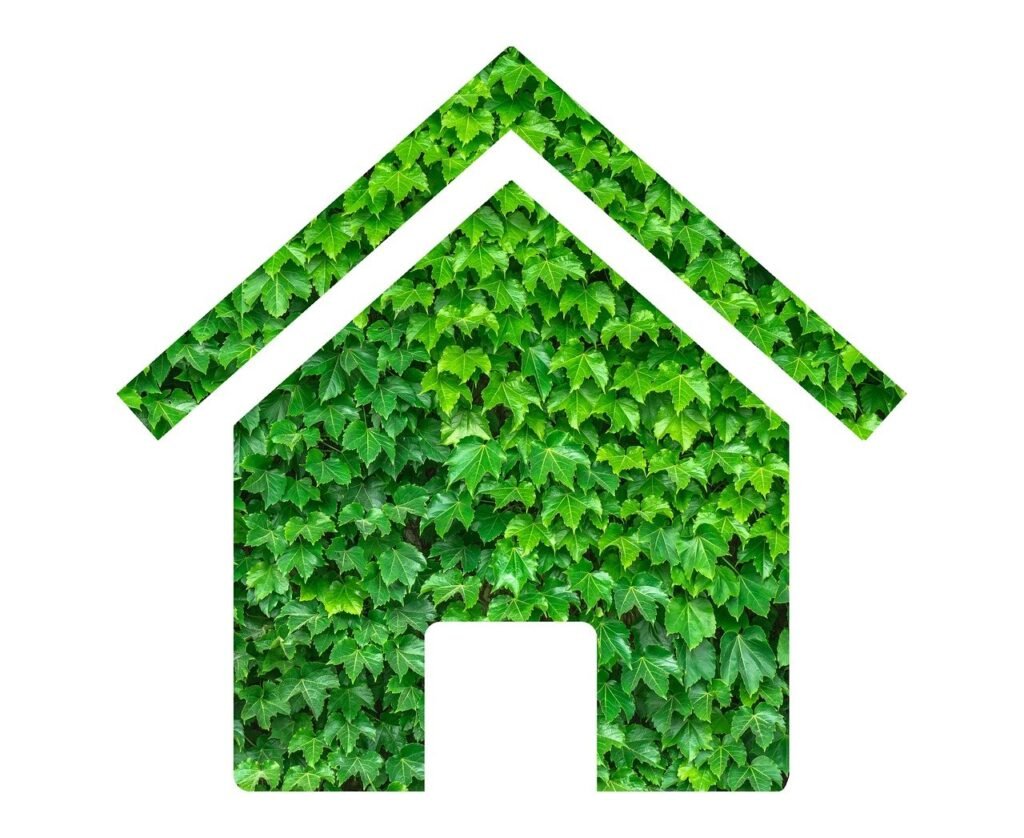
Being eco-friendly in home design and renovations is key nowadays – not just a buzzword but a vital move. Homeowners are more aware of their impact and want greener homes. This sustainability focus reflects growing care for the environment and responsible living.
A big part is improving energy efficiency. Homeowners upgrade to appliances that use less power and cut utility bills – LED lights, efficient heating/cooling, smart thermostats. These make a smaller carbon footprint but also save money long-term.
Material choices also go green. Eco picks like fast-growing bamboo or recycled glass and wood are popular for floors, counters, and cabinets. They’re durable, and look great, but lighten environmental impact.
Insulation is critical too. Proper insulation maintains an even indoor temp, needing less heating/cooling. Homeowners pick eco-friendly types like wool or recycled denim. These work well and are healthier than fiberglass.
Water conservation also matters. Low-flow faucets, toilets, and showerheads reduce usage. In dry areas, rainwater systems provide irrigation and non-drinking water.
Solar energy is growing as a green power source. More homeowners add solar panels to make their electricity, cutting fossil fuel reliance and costs. Upfront investment pays off long-term.
Sustainability is also in small details. Low/no VOC paints, natural cleaning products, and indoor plants improve air. Little choices make homes greener.
This eco-friendly home trend shows deeper care for our planet. Sustainable choices make healthier spaces and support environmental protection. Even small acts help build a sustainable future.
Open Floor Plans Still Big in 2024
The open floor plan remains hugely popular in home design today. This matches homeowners’ want for a more connected, spacious feel. Beyond just a trend, this style – with fewer walls and bigger, multi-use spaces – fosters interaction, flexibility, and a sense of freedom.
The appeal is making homes feel larger and more welcoming. Removing walls between the kitchen, living and dining areas makes them community hubs. Cooking, hanging out, and relaxing happen together in a shared spot. This is great for families – parents can watch kids or chat with guests while making meals.
Creating an open floor plan involves more than knocking down walls. Thoughtful design balances spaciousness and coziness. Carefully placing furniture, using varied flooring, and area rugs defines zones without barriers. An island can subtly separate the kitchen and living space yet provide extra workspace and storage.
Lighting is crucial in open plans. With shared space, lighting needs to adapt – bright for cooking or work, soft for dining and relaxing. Skylights and big windows also let in natural light for an airy, open vibe.
The aesthetic offers a chance to express personal style – from minimalist to rustic. The lack of walls also allows for bold art, and statement furniture that might overwhelm enclosed rooms.
Managing sound does matter in open plans. Without walls blocking noise, it travels easily across the space. Solutions like acoustic panels, soft furnishings, and rugs help absorb sound and prevent echoes.
Spa Bathrooms at Home – 2024 Home Improvement Trends
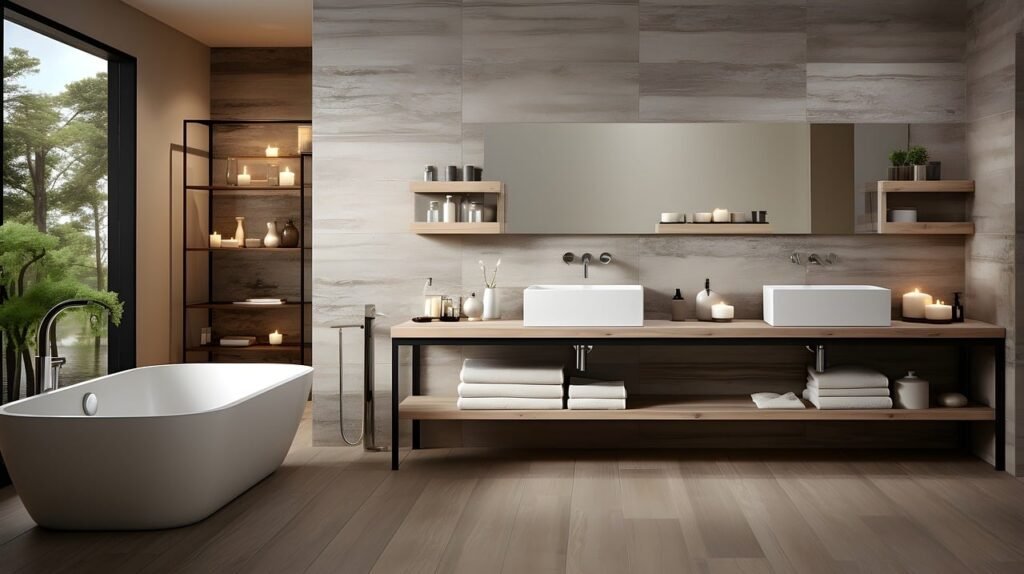
Making bathrooms into personal spa retreats is huge in 2024. This matches folks wanting relaxation and luxury without leaving home. More than looks, it’s creating a space that offers an escape from busy life.
The shower often starts the spa transformation. Walk-in showers with open, spacious designs are popular. They frequently have multiple or rainfall showerheads for a luxurious, immersive experience. Steam showers are also growing for their spa-like qualities and health benefits like relaxation and better circulation.
Freestanding tubs are also typical. Set against natural stone or tile backdrops, they become a focal point and offer a deep, soothing soak. Built-in heaters keep the water warm and jets providing a massage make it feel even more indulgent.
Natural materials like stone, wood, and bamboo add sensory warmth and connection to nature. Visually pleasing, they also feel nice to the touch. Calming colors and soft lighting contribute to a peaceful atmosphere, making the bathroom a haven of tranquility.
Technology has entered these bathrooms too. Heated floors give comfort underfoot during cold weather, while smart mirrors with lighting and touch controls add modern convenience. Digital controls allow precise adjustment of temperature and flow for a perfect bathing experience.
Sound and scent enhance the spa vibe. Integrated music or nature sounds and aromatherapy diffusers soothe and relax.
Storage looks good but also stays hidden – built-in shelves, recessed cabinets, and concealed spaces keep necessities accessible but out of sight to prevent clutter. An organized, tidy space reduces stress.
In 2024, the spa bathroom is considered an aspect of life revealing a more intense interest in self-care and well-being. It turns a routine area into a sanctuary for reposting and restoring energy action and provides an oasis of luxury, and ease regularly.
Smart Homes—Today’s Future Life
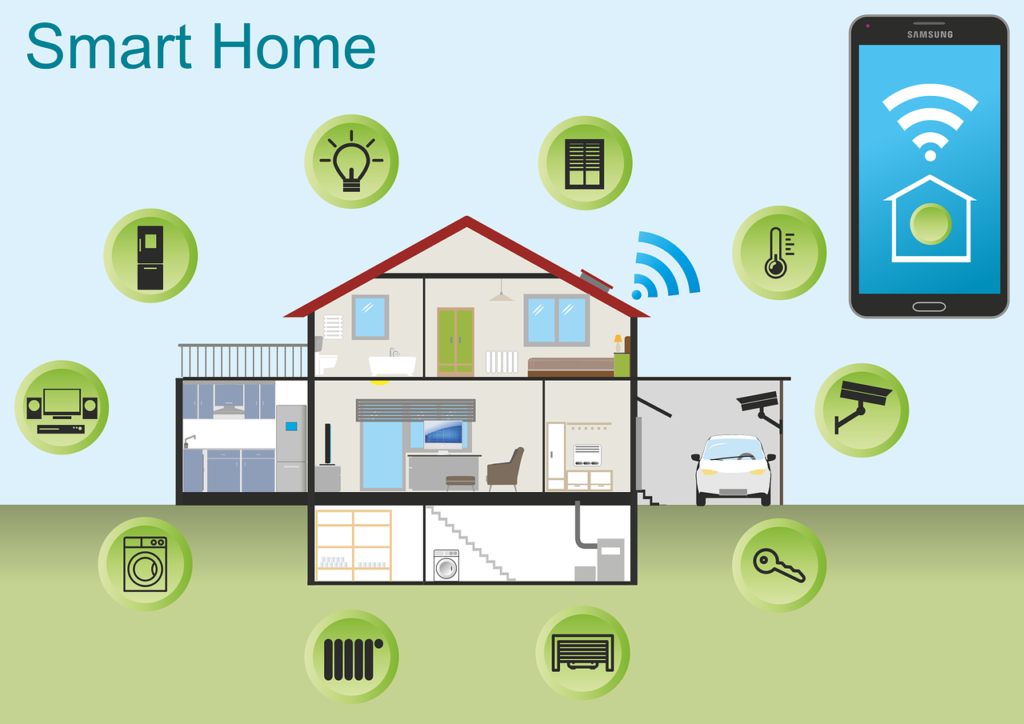
Smart home technology is going mainstream in 2024. It’s not just a fad anymore, – this tech is changing the way we live in our houses. People want things to be much easier, safer, and also more efficient. Adding more and more technology into our daily lives makes this possible.
The “smart home” label covers a lot of devices and systems that automate and also improve home life. One big change is in the home automation. These systems let you control the lights, temperature, and blinds without getting off the couch. Adjusting settings with a push of a button or by talking is now the reality for many.
Security has gotten WAY better thanks to the smart tech too. Video doorbells, smart locks, and also cameras you can check from your phone offer peace of mind whether you’re home or away. They deter robbers but they also let you look in anytime.
Energy efficiency is another benefit. Smart thermostats learn your schedule and adjust the temperature, cutting out a lot of energy use and bills. Smart lighting turns off the unused lights, and smart appliances run at good times.
Entertainment has changed as well. Smart TVs, speakers, and home theaters provide an easy immersive experience. This makes getting to the music, movies, and more much less of a hassle.
Smart home assistants like Alexa, Google Assistant, and most importantly Siri are key to smart homes. With voice commands, they can do a lot – play music, report the weather, and also control some other smart gadgets. This convenience also makes them very accessible.
In 2024, smart home tech will do much more than just add gadgets. It will make the homes a lot more responsive, safe, and also efficient. This will improve the comfort and also function. It also shows a shift toward a more automated, connected future. As we welcome these many improvements, our homes will reassume an active role in daily life.
Home Color Trends in 2024
In the year 2024, there is a shift towards bright and warm colors in homes. This is a shift away from the earlier prevalence of colorless hues, demonstrating that individuals want to liven up their homes with some stimulus.
These vibrant colors are a hint to personalized style preferences. They prefer unique and warm color shades instead of traditional and safe color options. The rooms have come alive with deep blues, rich greens, and luminous yellows.
The choice of colors is not just about what one chooses but how one uses them. A brightly colored accent wall acts as an eye-catcher and creates depth. At the same time, very brightly colored furniture is strongly contrasted against the dull background and presents both blueness and some moderation.
Warm tones such as burnt orange and terracotta are also on the rise. They warm up living rooms and bedrooms thus making them appear more comforting. The trend is also seen in the kitchen where cabinets and islands are dark blues or greens. Combined with the wooden or metal accents, it creates a stark contrast to the ubiquitous all-white look and brings the element of personality to the center of the home.
Bold and bright palettes, however, do not apply only to interiors because even the exteriors get sprinkled with some character. Homes display bright colors on their front doors, shutters, and sidings with a uniqueness that catches the first look. It is a way in which homeowners pass their sense of style right from the curb.
The substantial bold warm tones of 2024 do more than trendsetting as they stand for a cultural shift towards self-expression and individuality. But homeowners are not just redesigning their space; they are concocting environments that distinctly reflect who they are.
Conclusion – Home Improvement Trends in 2024
In 2024, people will fix up their homes in ways that suit their changing lives and values. They want their homes to be flexible, cozy, and eco-friendly. These trends aren’t just about looks—they’re about turning your home into a place that fits who you are and works for you. We’ll see versatile rooms, green choices, bathrooms that feel like a spa, and high-tech features. Each trend makes our living spaces more special in its own way. By following these trends, our homes become more than simple living spots—they change into custom retreats built for our evolving tastes. This year’s home improvement trends point us toward making homes that look good, feel good, and do good for the planet.

